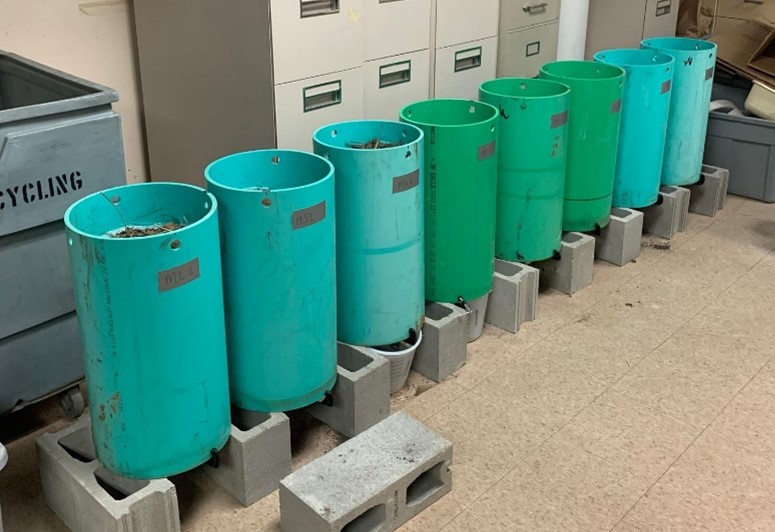Purpose
Rising chloride contamination in ground and surface waters is a growing concern in Minnesota. Previous studies estimate 87% of the chloride load originated from road salts, fertilizers, and wastewater treatments plants, and 6% from livestock manure. However, these estimates may be outdated as the livestock industry and manure application practices have evolved since these estimates of manure chloride concentrations were calculated in 2004. It also remains unclear how varying soil types affect the movement of chloride leaching following manure application. The aim of this study is to understand the movement of manure-based chloride from liquid and solid manures in Minnesota soils through a series of intact core leaching studies. Specifically, this project examines the magnitude of chloride leaching from swine and turkey manure application and compares it with synthetic potassium chloride fertilizer and a no nutrient control. The soil cores represent fine and medium textured soil.
What Did We Do?
-
- Collected 24 12-inch soil columns from medium and fine-textured soils in Minnesota (Figure 1).
- Collected swine and turkey manure from Minnesota farms
- Analyzed soil pre- and post-leaching study for nutrient analysis (Cl−, Bray P, NH4+, NO3−, K, Organic Matter, pH, and Exchangeable Ca, Mg, Na, K)
- Analyzed manure samples for nutrient analysis pre-application (Total N, P2O5, K2O, Cl−)
- Added water to cores until they reached field capacity
- Applied manure using N-based application rates, and fertilizer using a K-based rate to 3 replicates
- Simulated 2-in rainfall events on days 4, 12, and 18 post nutrient application
- Collected and analyzed leachate for Cl−, NH4+-N, and NO3−-N

What Have We Learned?
-
- How chloride concentration varies based on manure type and species
- How the total amount of chloride applied via fertilizer application to cores varies by treatment
- How manure-based chloride moves through soil
- How fine and medium textured soil influences the movement of manure-based chloride
- How chloride storage changed by soil type following the experiment (Figure 2)
- Medium textured soils had a greater change in chloride storage in both top and bottom layers compared to fine textured soils
- Manure additions increased chloride storage in both medium and fine textured soils
- Control soil cores experienced a loss in chloride storage following leaching

| Treatment |
Cl− (lbs/1000 gallons) |
Cl− (lbs/ton) |
Cl− added per core (g) |
| Liquid |
26 |
– |
1.49 |
| Solid |
– |
2.7 |
0.179 |
| KCl |
– |
940 |
0.576 |
| Control |
– |
0 |
0 |
Future Plans
Our group would like to complete a second round of this study the following year on newly identified liquid and solid manure and an additional coarse textured soil type. Future attempts in creating chloride-based mass balances for the state of Minnesota will benefit from this study.
Authors
Matthew Belanger, Graduate Research Assistant, Dept of Soil, Water, and Climate, University of Minnesota
Corresponding author email address
Additional authors
Dr. Erin L. Cortus, Associate Professor and Extension Engineer, Dept of Bioproducts and Biosystems Engineering, University of Minnesota
Dr. Gary W. Feyereisen, Research Agricultural Engineer, USDA-ARS Soil & Water Mgt. Research Unit
Nancy Bohl Bormann, Graduate Research Assistant, Dept of Soil, Water, and Climate University of Minnesota
Dr. Melissa L. Wilson, Assistant Professor and Extension Specialist, Dept of Soil, Water, and Climate, University of Minnesota
Additional Information
Wilson Manure Management and Water Quality Lab Site
Acknowledgements
This project is funded through the University of Minnesota Water Resource Center’s Watershed Innovation Grants Program. We’d also like to thank Scott Cortus, Eddie Alto, Todd Schumacher, Dr. Pedro Urriola, and Thor Sellie for their assistance.

